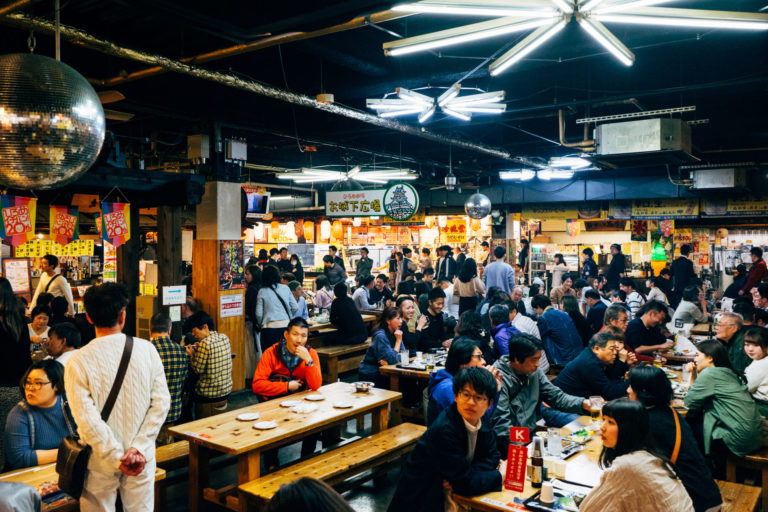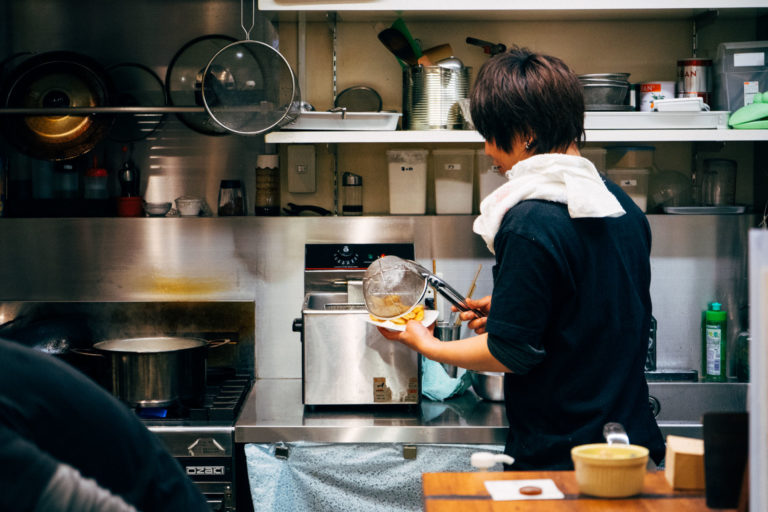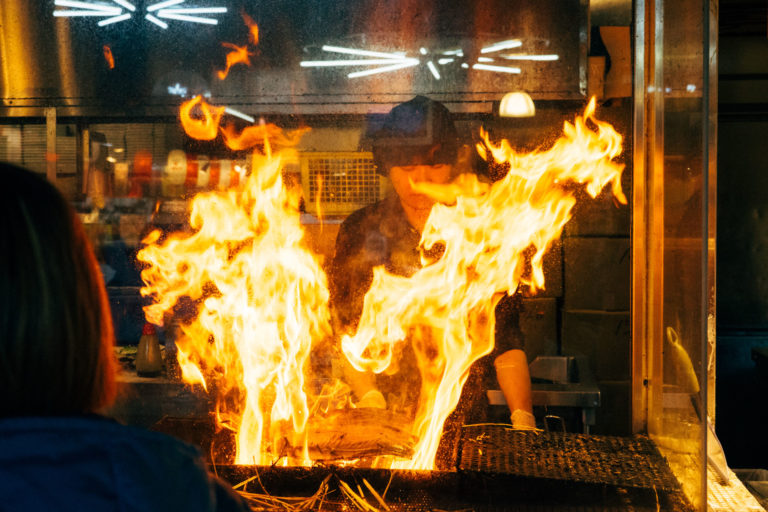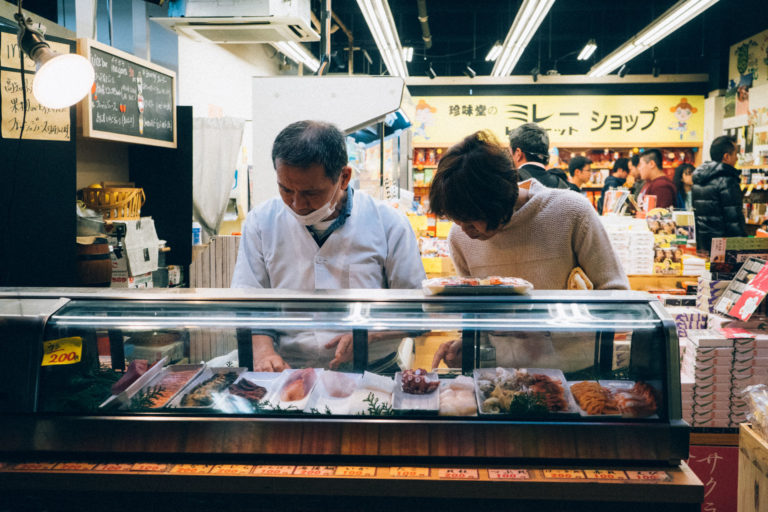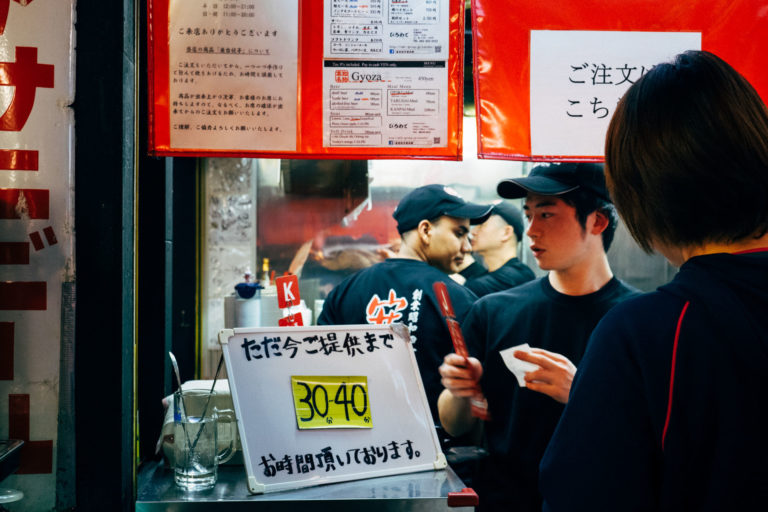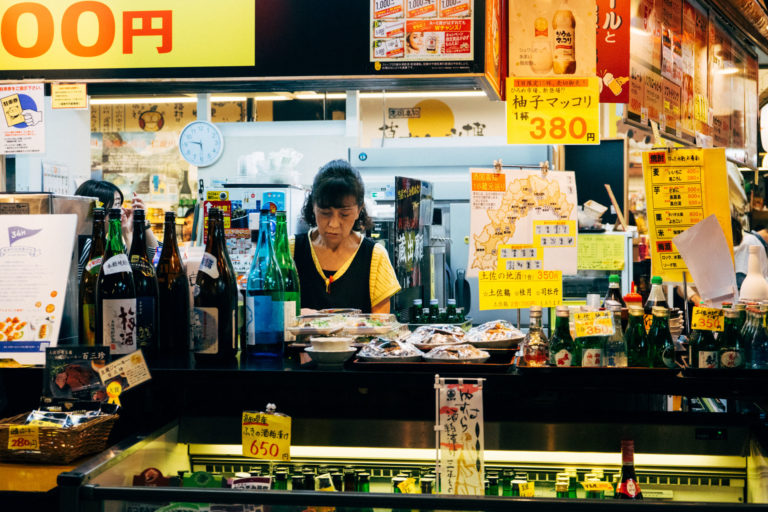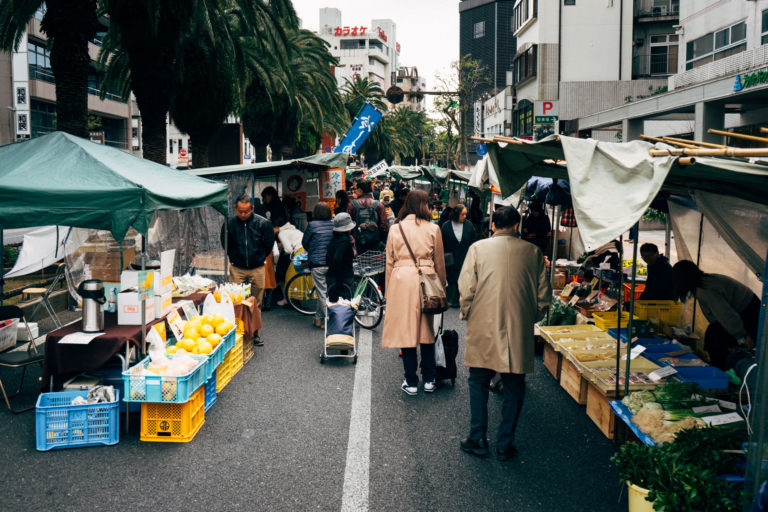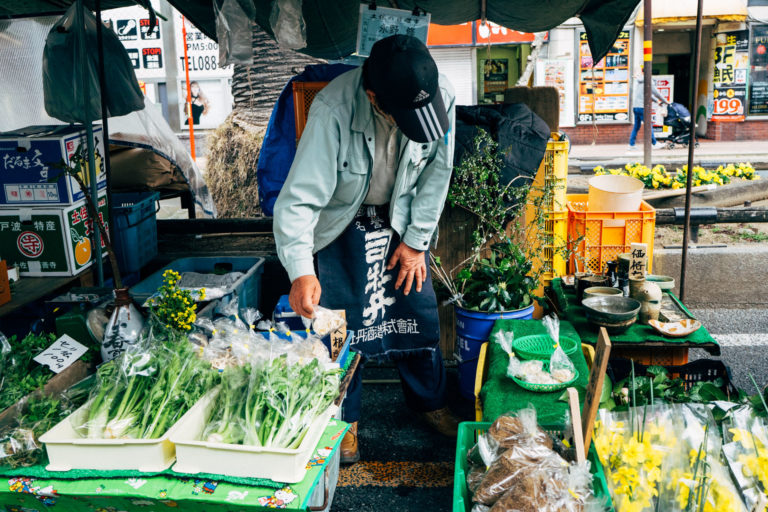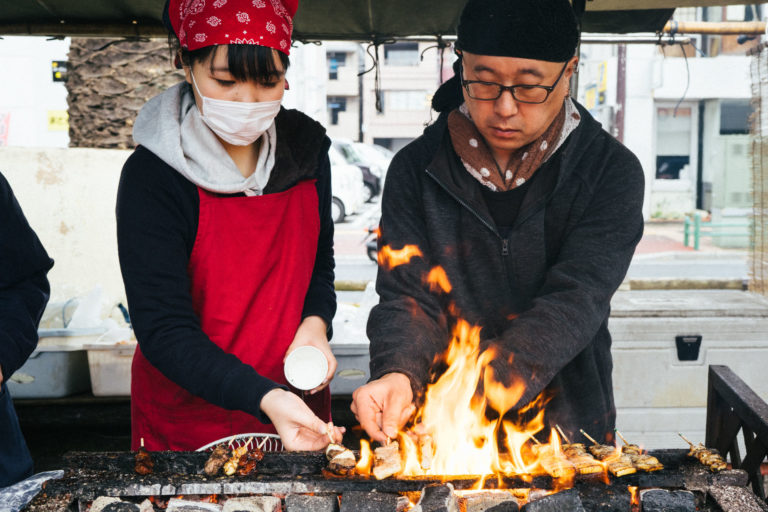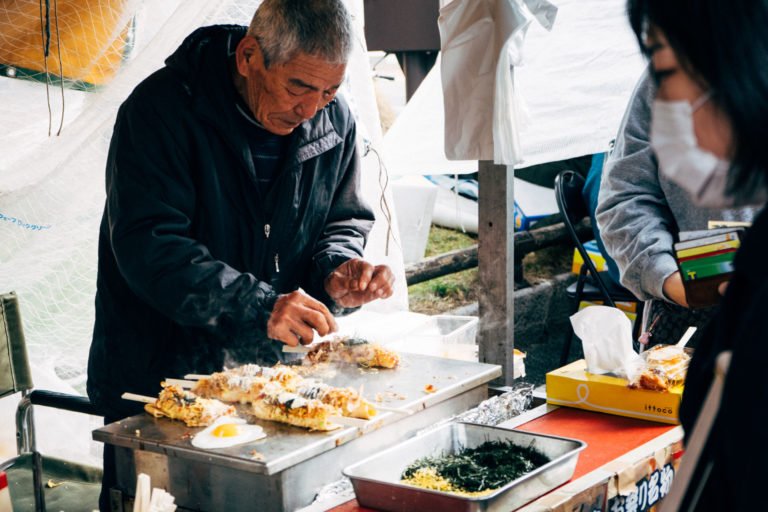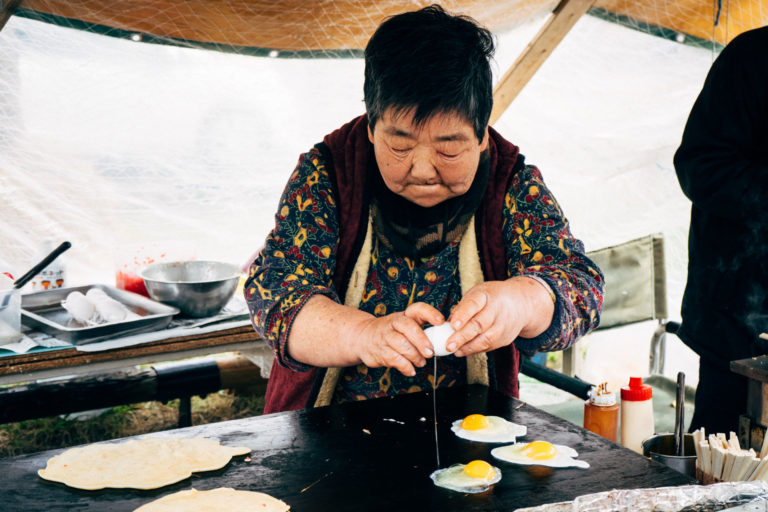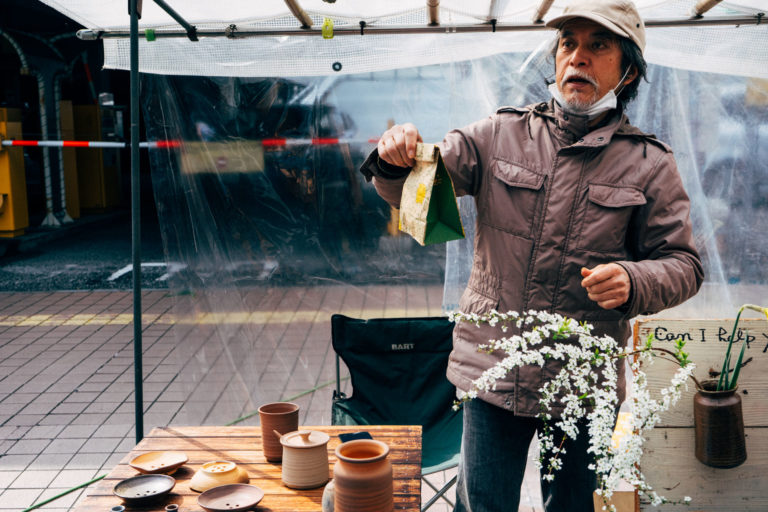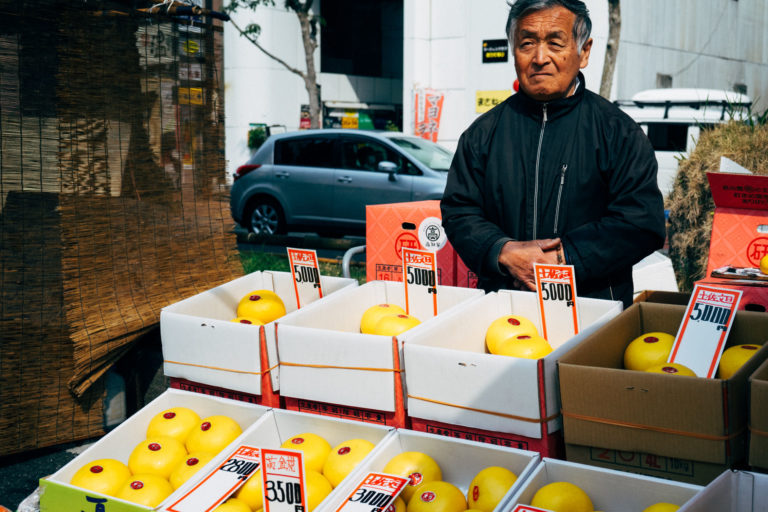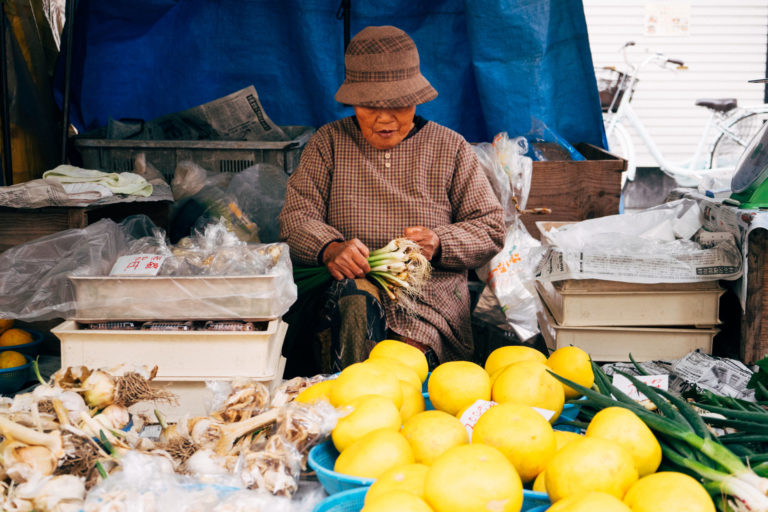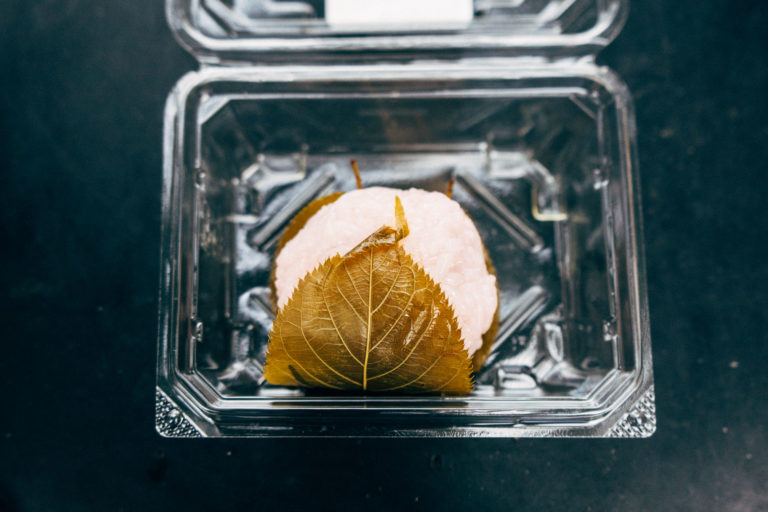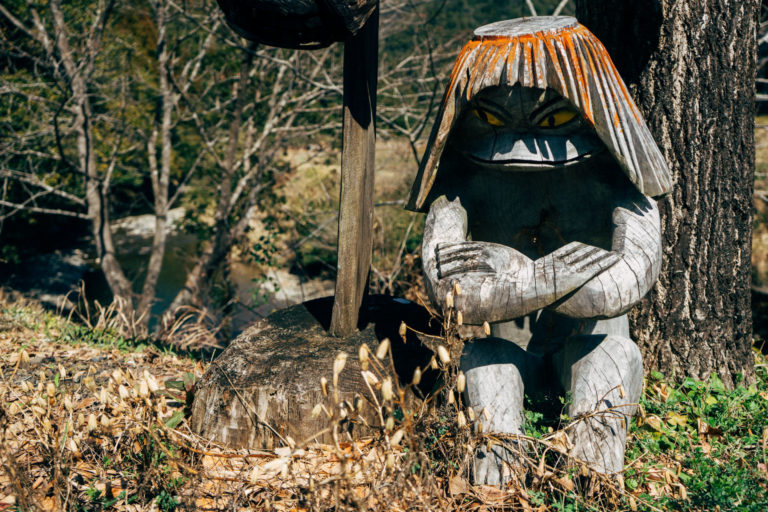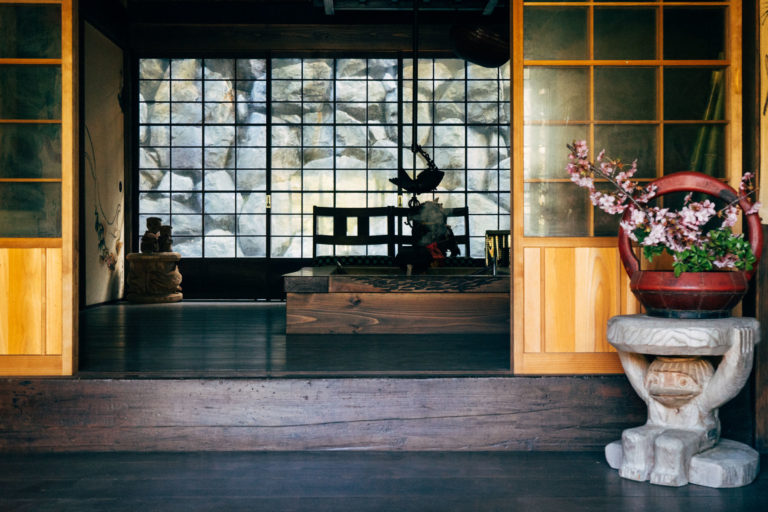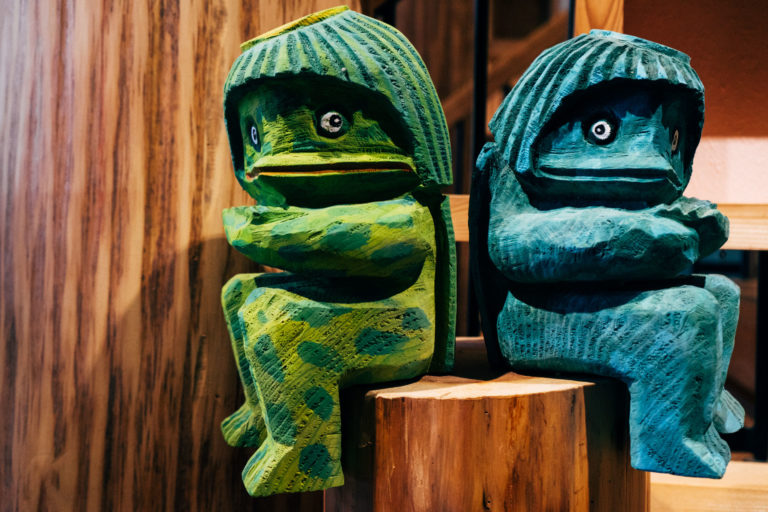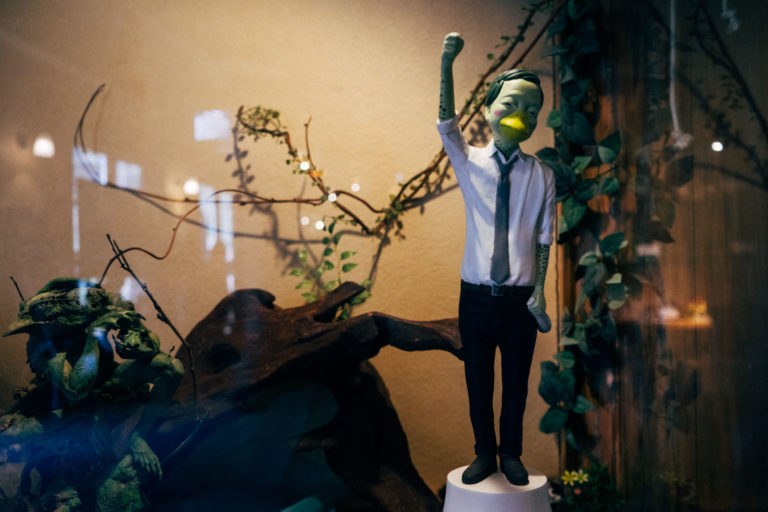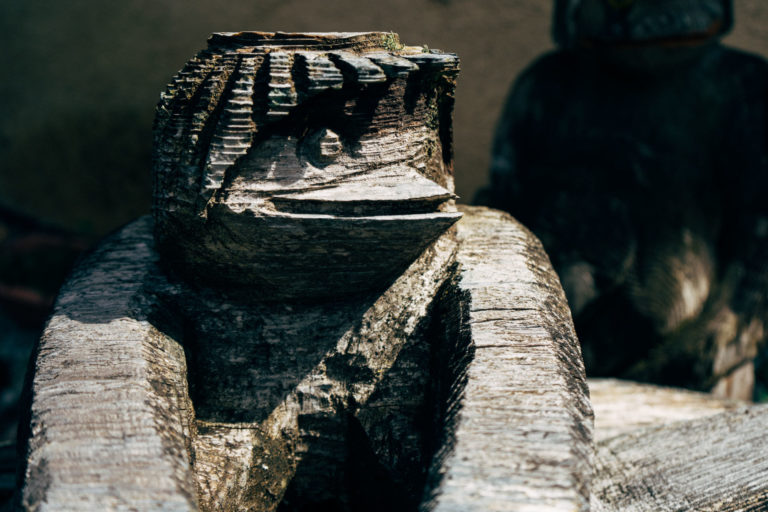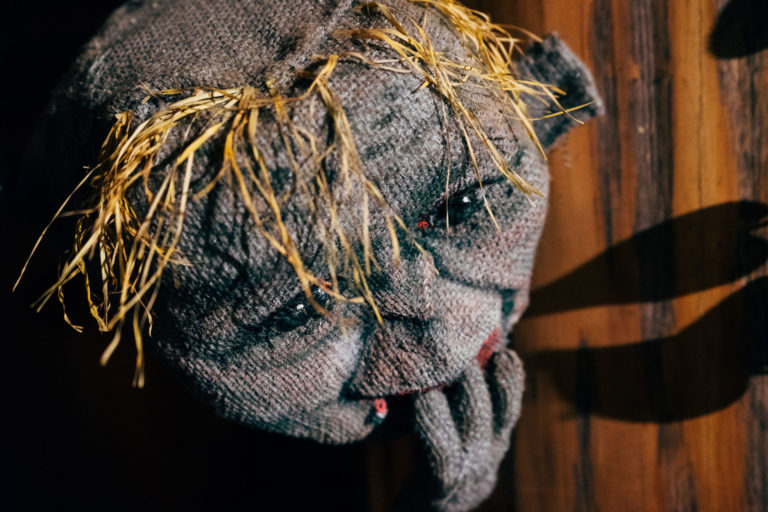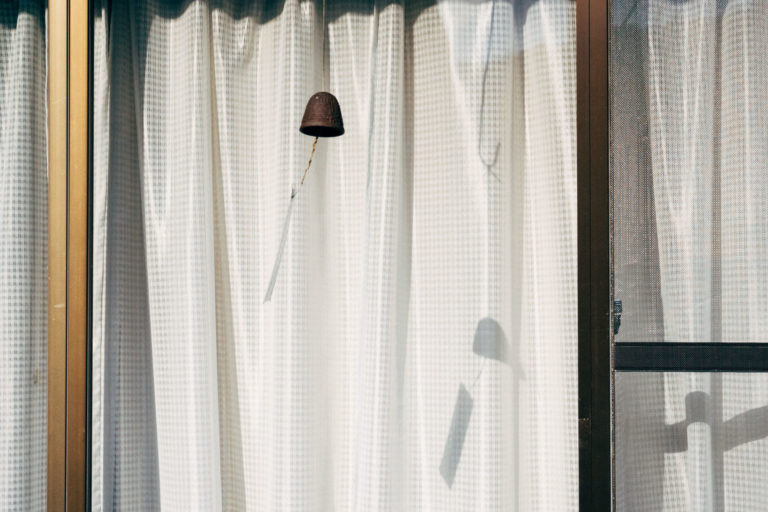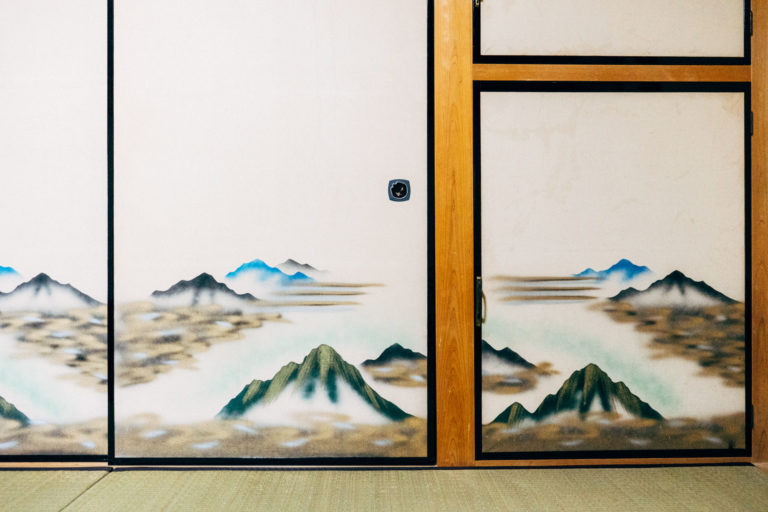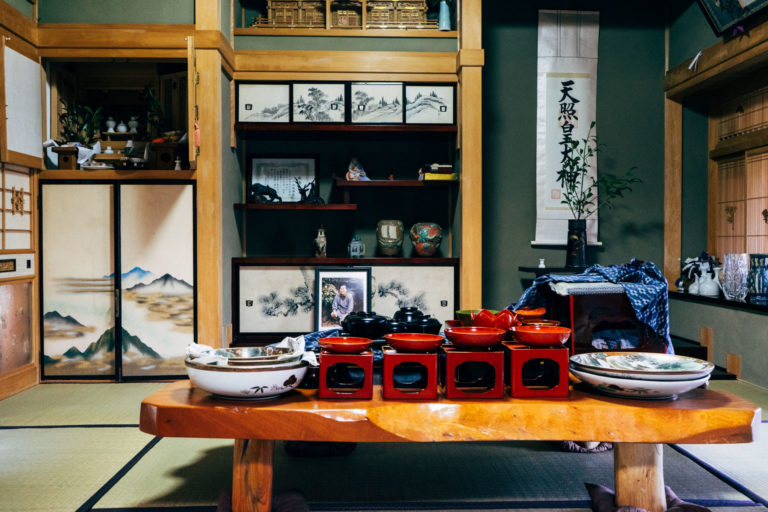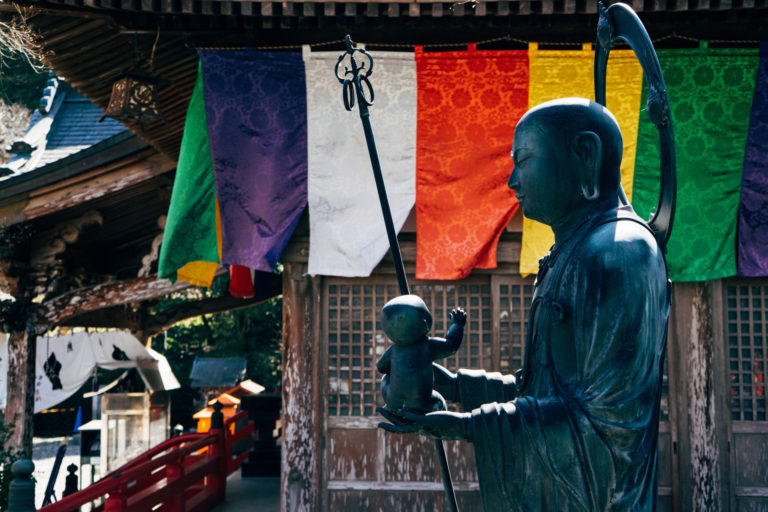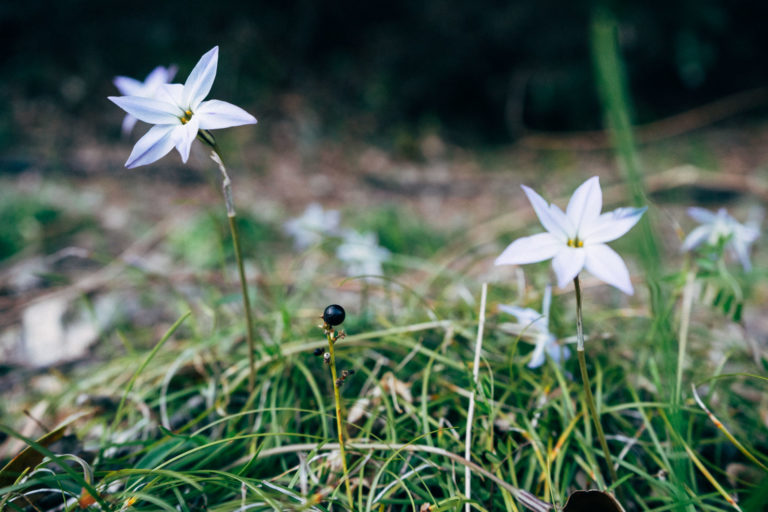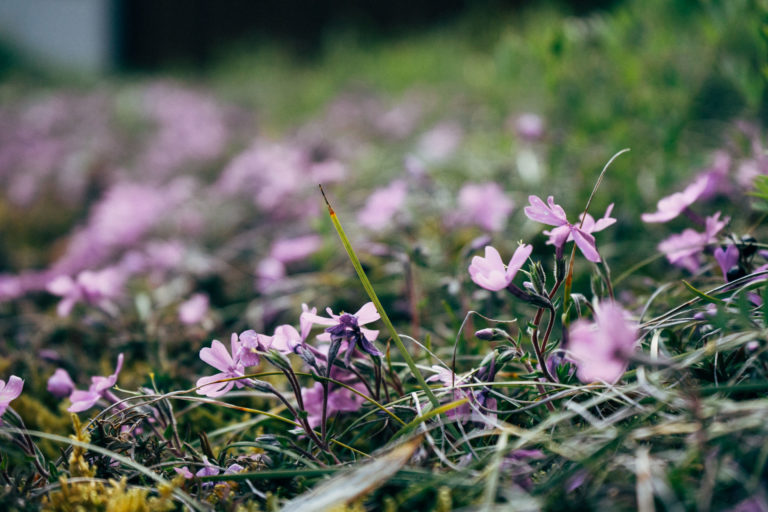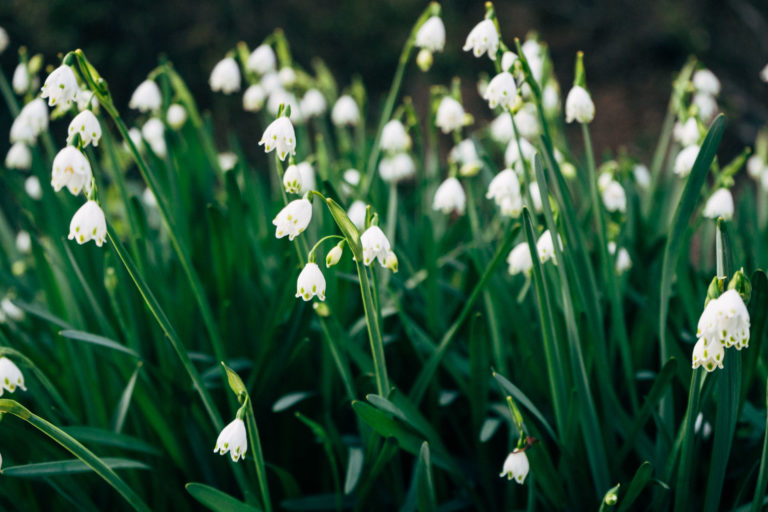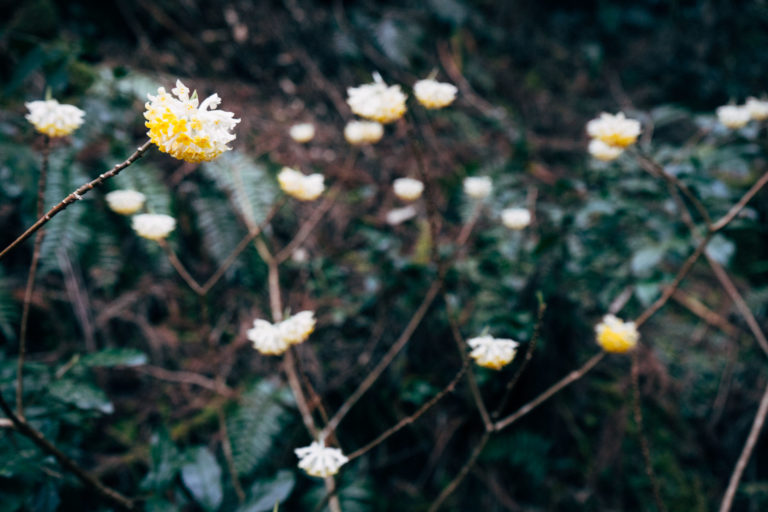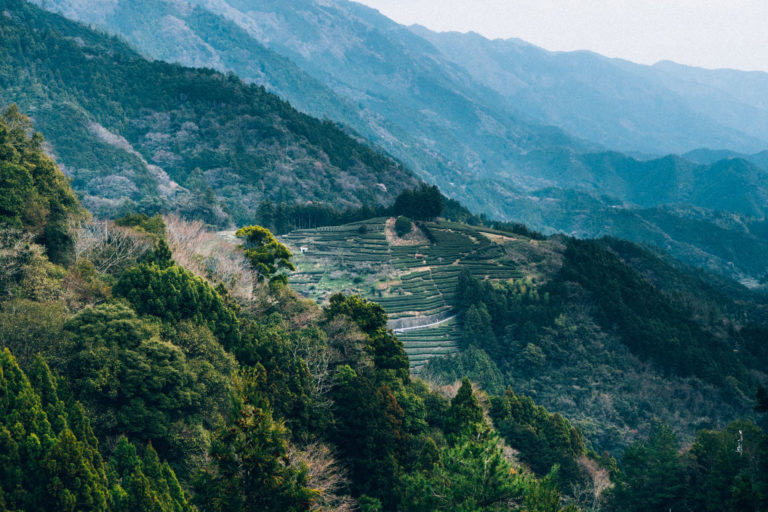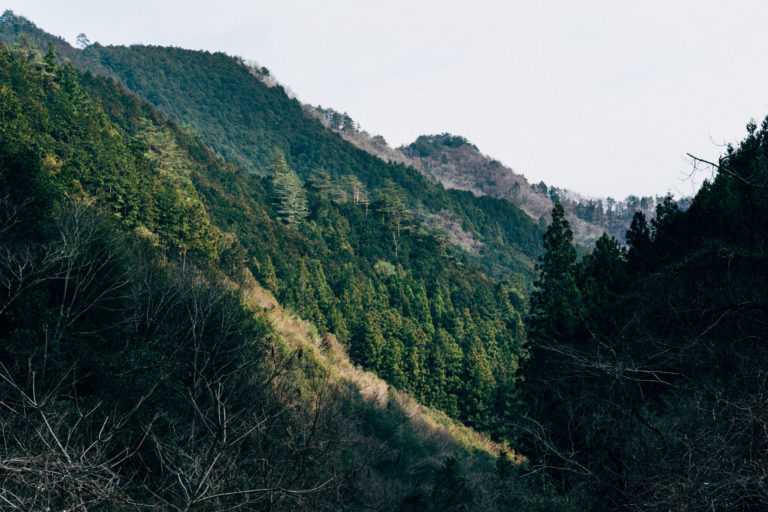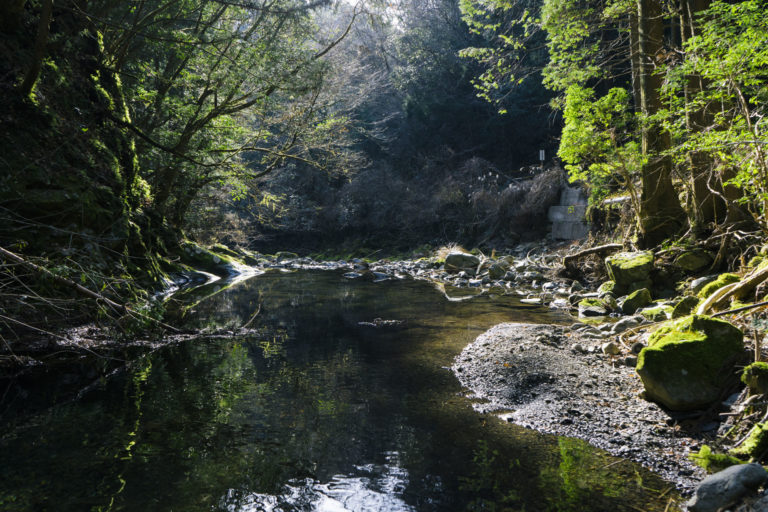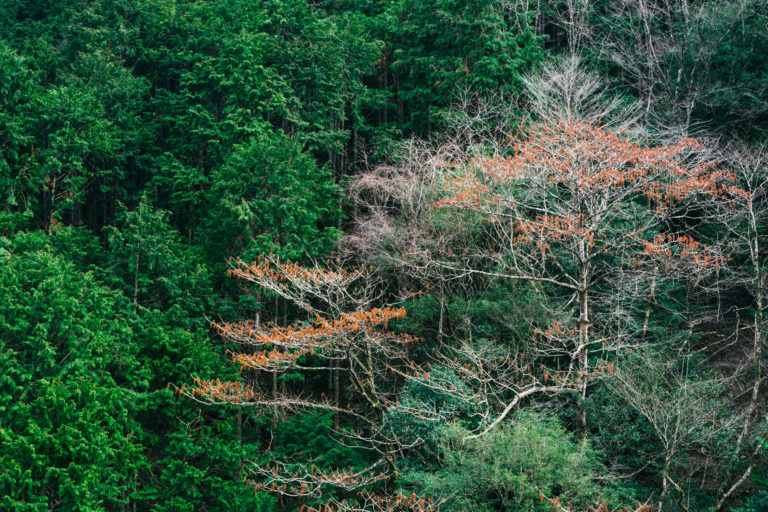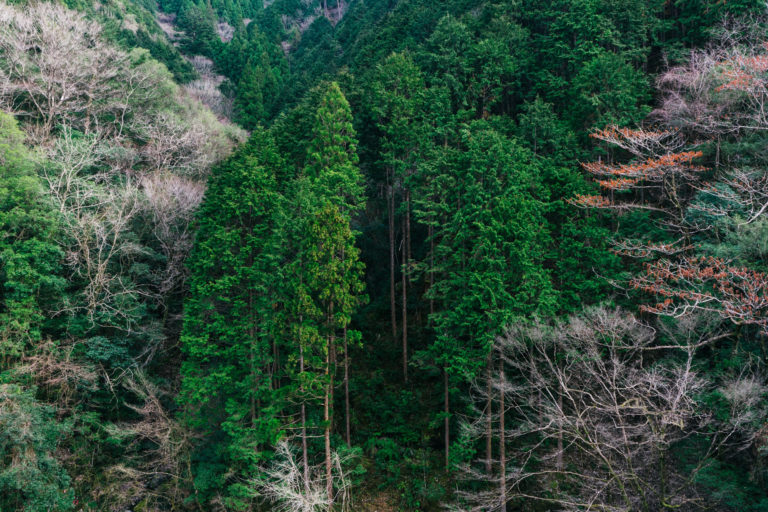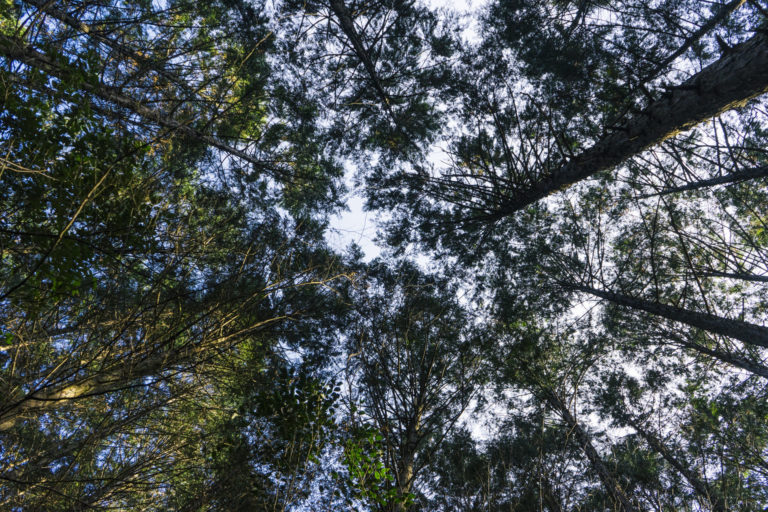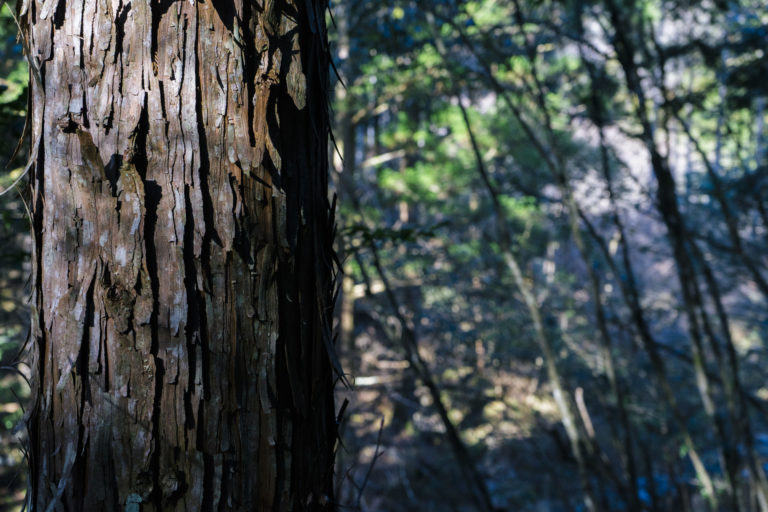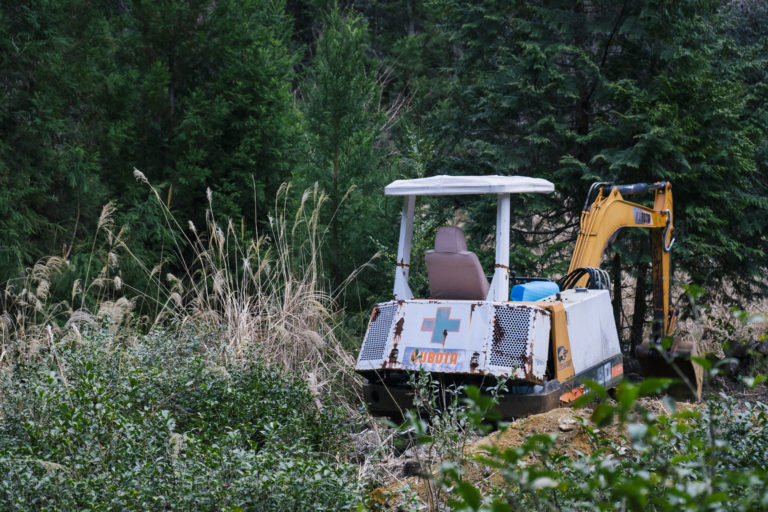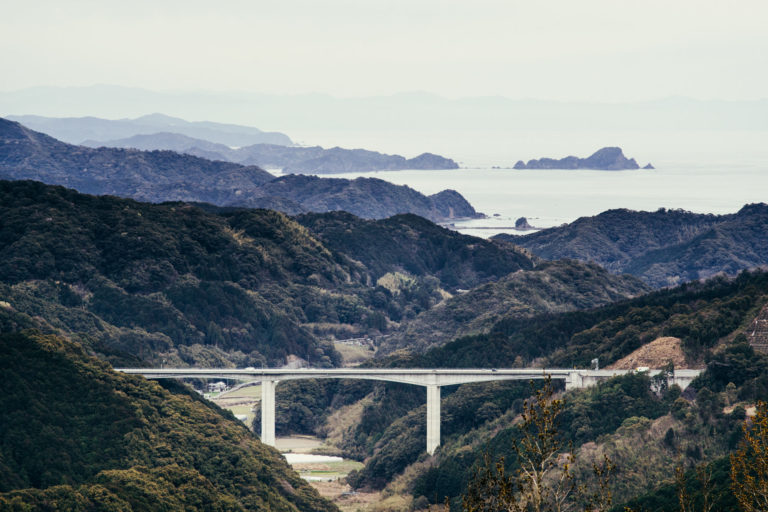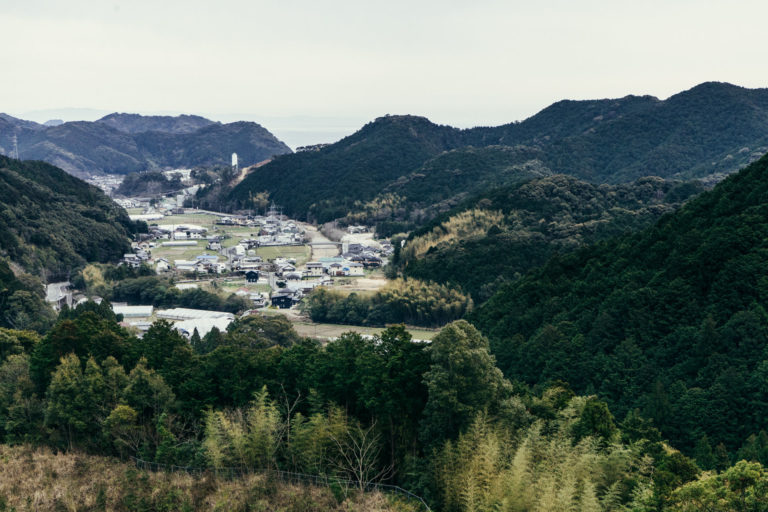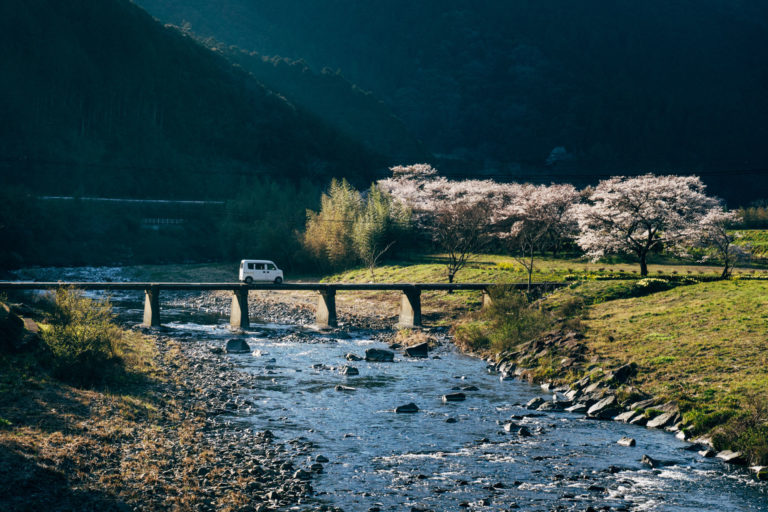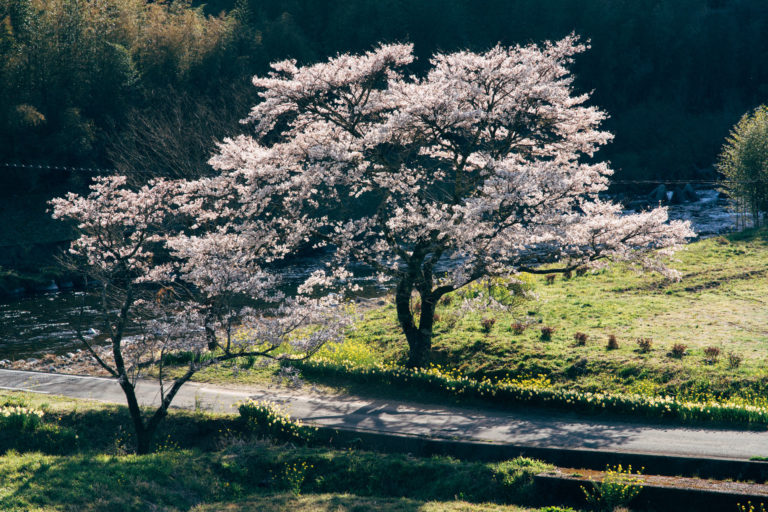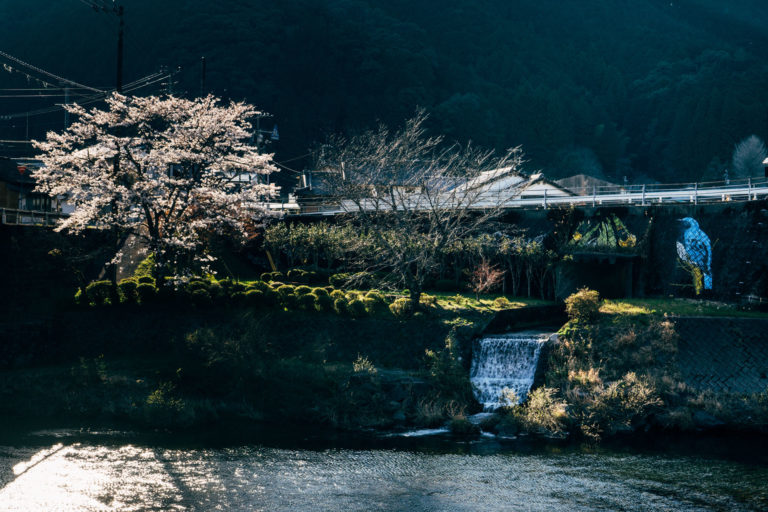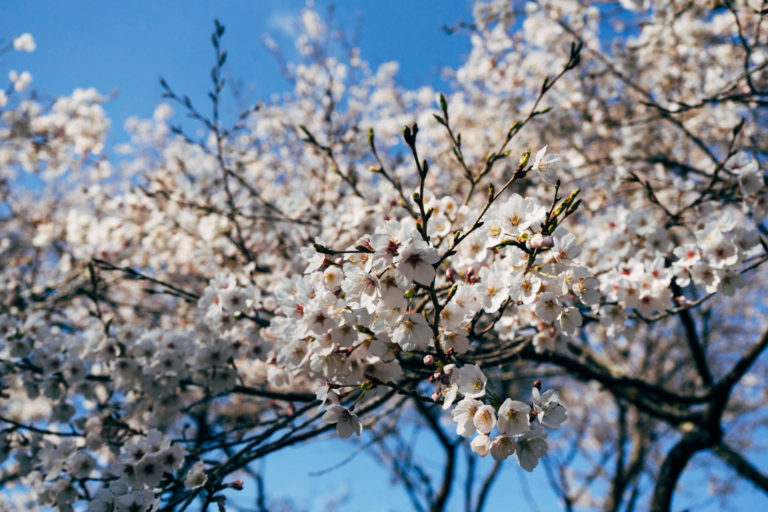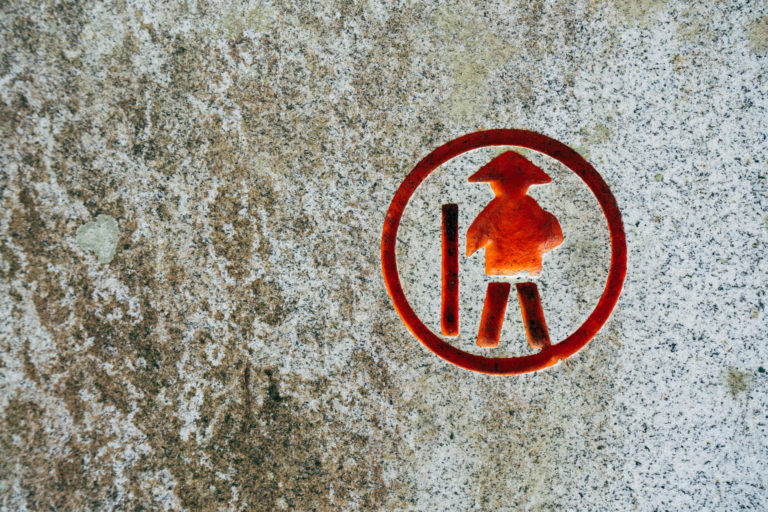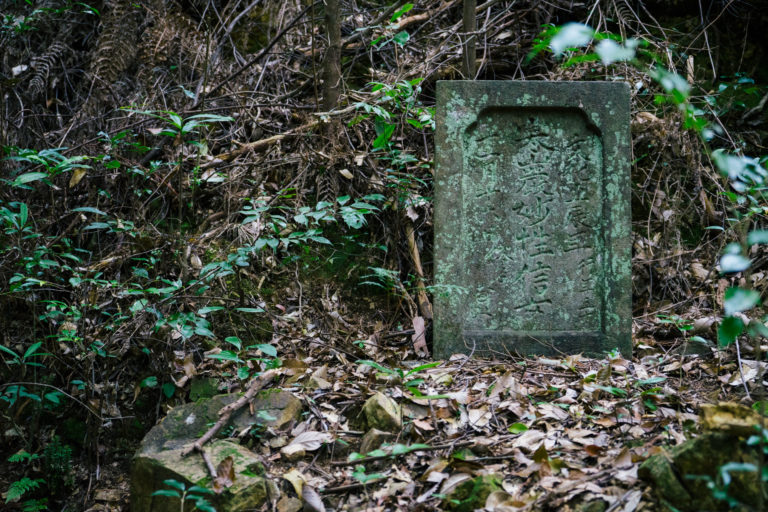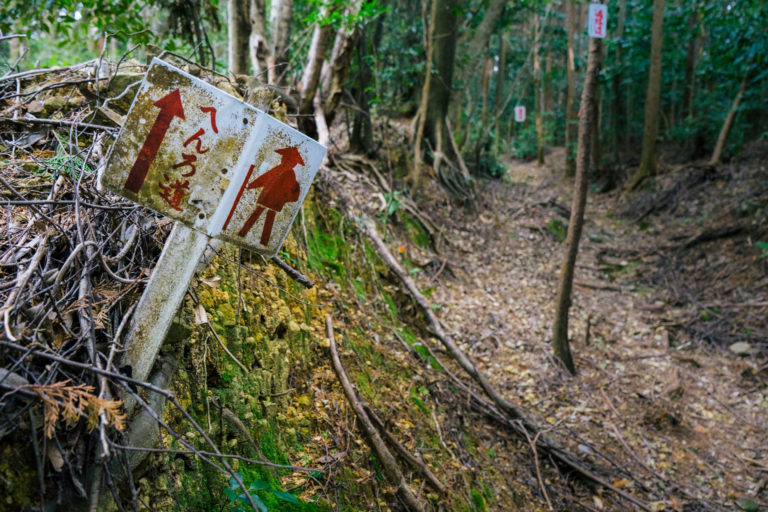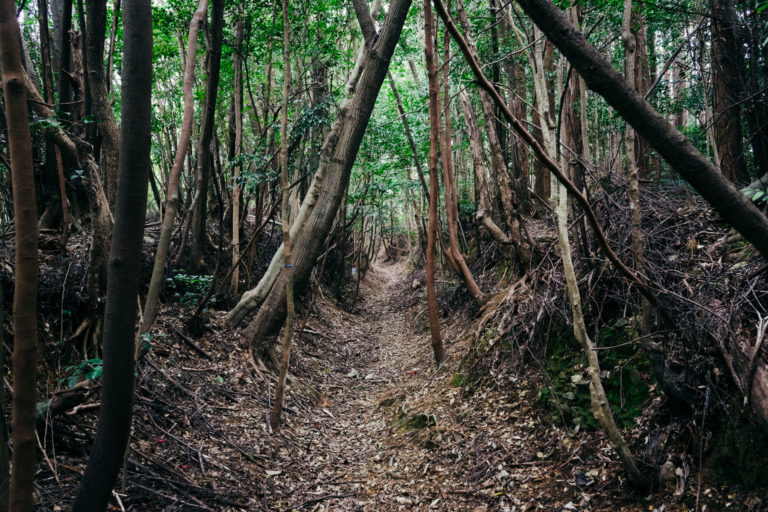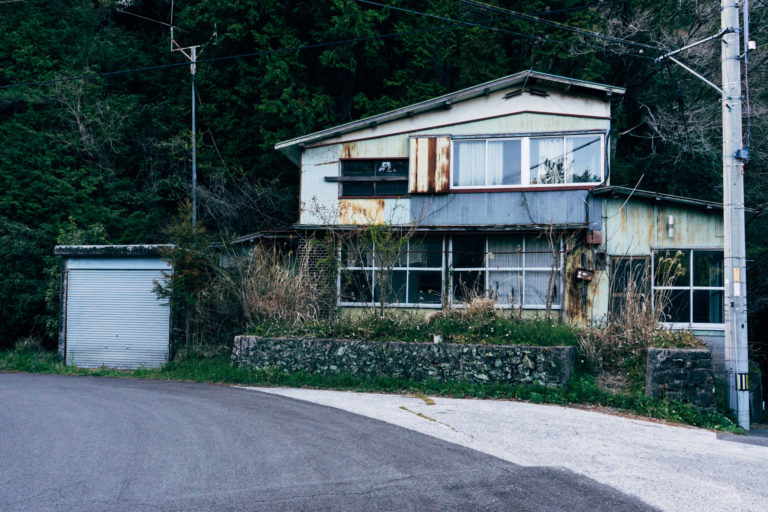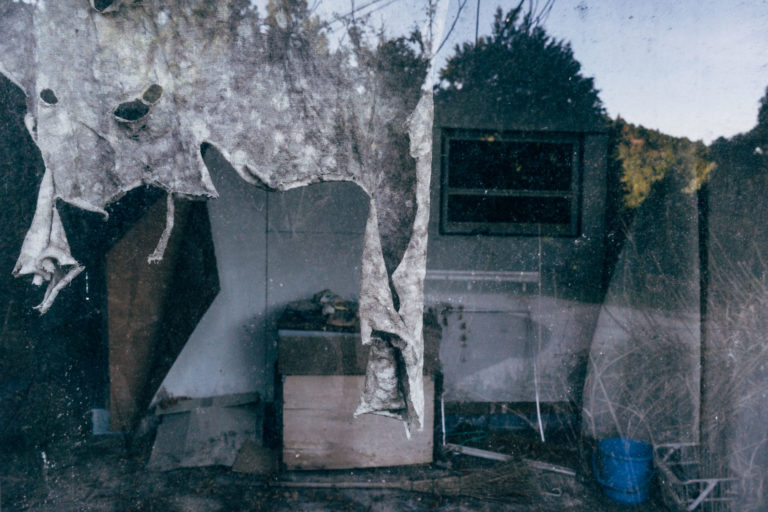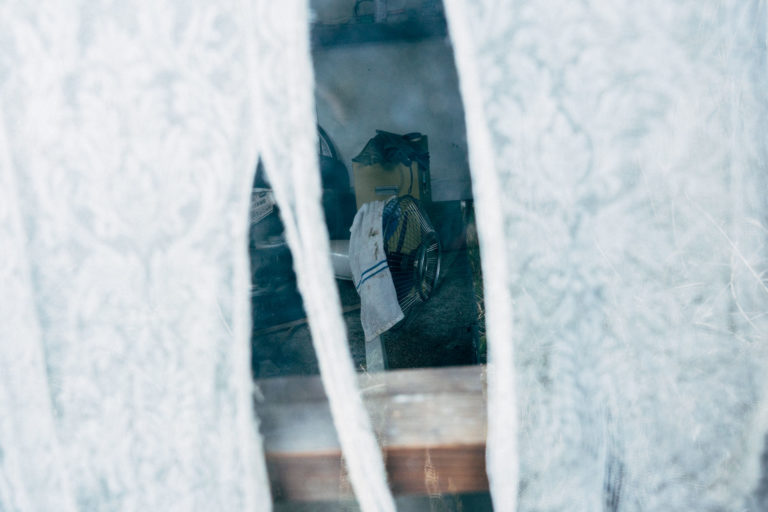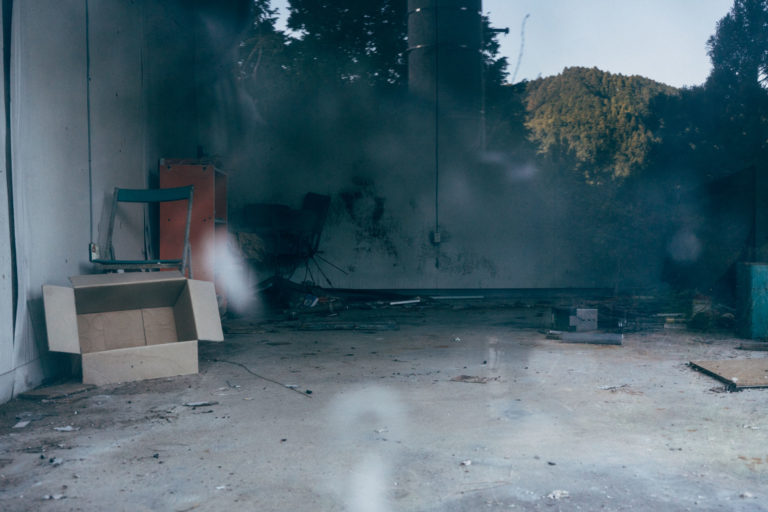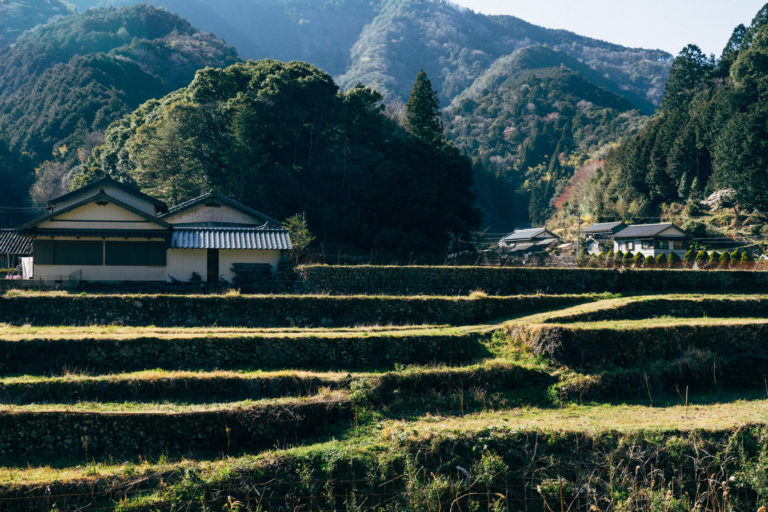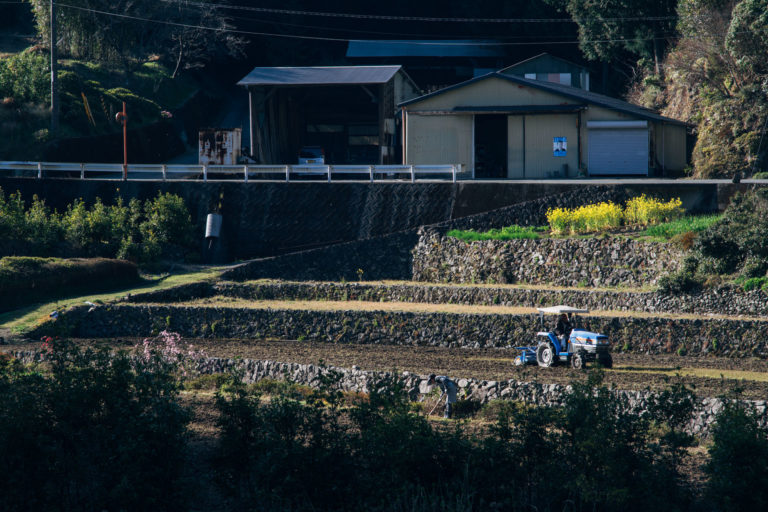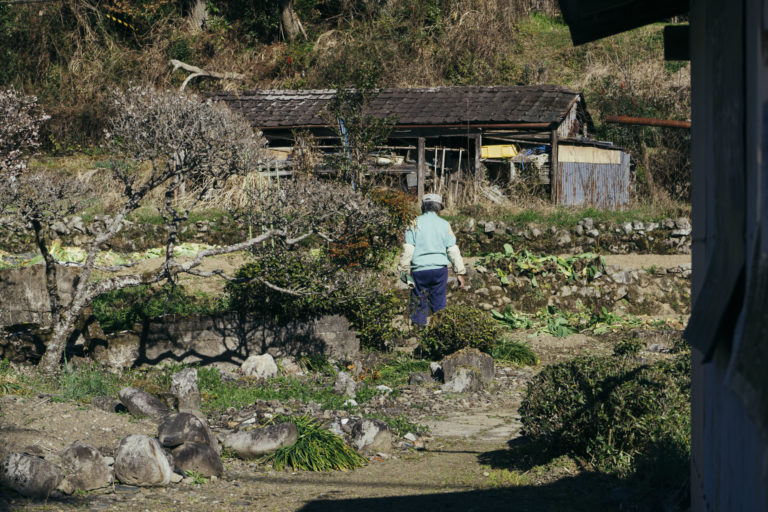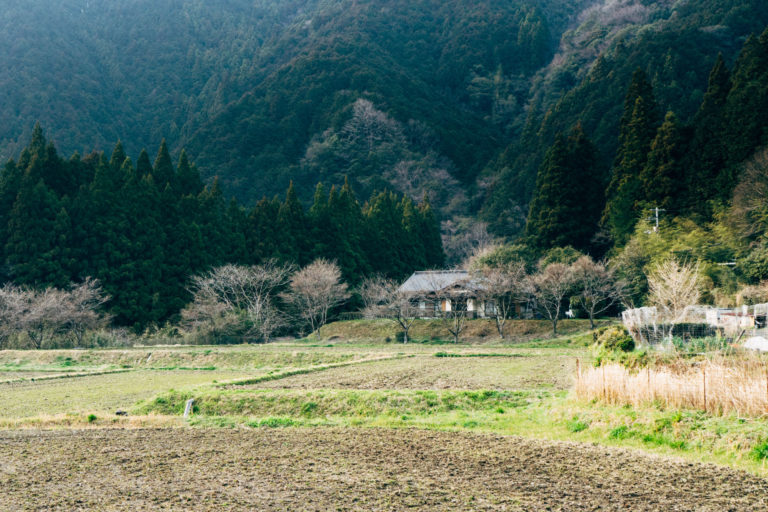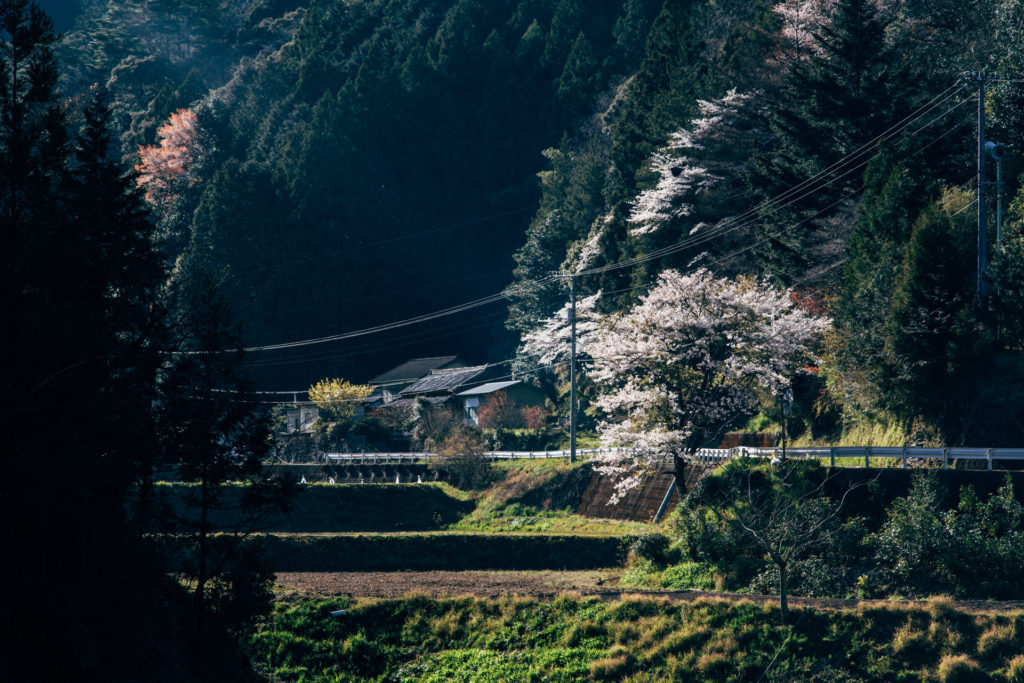
After a few weeks of intensive travel on the southern island of Kyūshū, I realized a one and a half month break on the least visited of the four main islands of the archipelago : Shikoku. There, beside the Shimanto River, I had a part-time job in a guesthouse in exchange of accommodation. This long period in the same place was particularly adapted to the rhythm of the island famous for its pilgrimage (四国八十八箇所, Shikoku hachijū hakkasho), its fruits (ゆず-yuzu and みかん-Mikan), its fish (カツオ – Katsuo or bonite), but especially to be the place where many japanese people do retire. This article will probably be a little longer than previous ones, but since I haven’t written for a while and because I have a lot to tell about Kōchi Prefecture…
Genryu No Sato
Firstly, I would like to thank Manon who works at the Genryu no Sato resort and who welcomed me to this great mountainous area where the purest japanese river flows. She comes from Reunion Island and lives here since two years. She manages the team of volunteers and does many tasks within the resort. She and her boss, Aoki-San, manage this place where many tourists come to enjoy the tranquility of nature to make a barbecue and appreciate the silence away from the stress of the big cities. They have recently been joined by Sakura, a young japanese graphic designer from Ehime Prefecture in the North West of Shikoku who began her trial period towards the end of my stay. The team is completed bu workawayers : usually young foreigners, most of the time with working holiday visa, who come to discover the japanese’s countryside and work at the same time. We were 2 to 5 volunteer workers, we slept in a chalet, at the top of the resort area, and we worked 4 hours a day, 5 days a week.
I didn’t really know what to expect about the work in Japan. For this reason, I chose a job with a short daily work period, expecting that this duration would probably be lengthened according to the tasks to be carried out. Japan’s reputation for work is no secret to anyone, and I expected to be more or less exploited in one way or another. Luckily, none of this has happened.
During a large part of the stay, we were 3 coworkers : Thomas, who came straight from Australia, didn’t care about manga and nihilist poet in the soul, Morgan, French landed from Poitiers, taking advantage of a break before resuming his studies as a specialized educator to discover the country he dreams about (and spicy food!), and I, trying to discover a different Japan than the one that we can see in commercials or in pop culture. It took a few days before we find our optimal work rhythm, but after this short time of adaptation, we were able to finish the requested work in less time than expected. So we had even more free time to discover the area!
Week-end in Kōchi-Shi
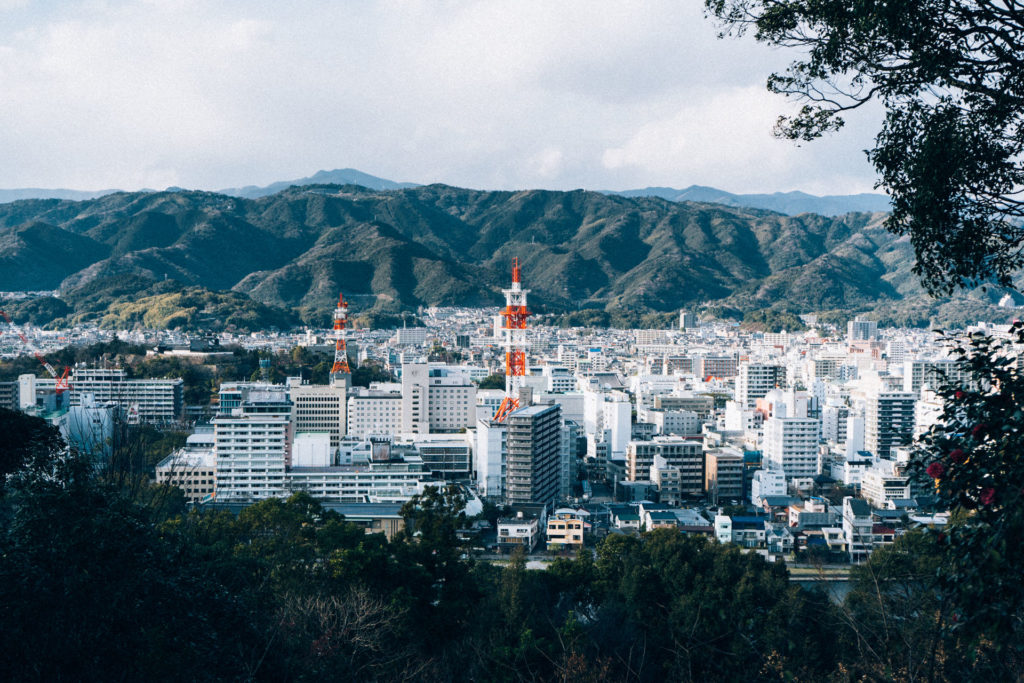
We also took advantage of a 3-day weekend to celebrate my 31st birthday in the city of Kōchi. It was an opportunity for Morgan and Thomas to eat their first real Ramen in an old restaurant with a sticky counter, far from the sanitized soups that we find here and there along the main avenues. Rule number one to find a good ramen : ask an old man who seems to do shopping near you !
“Sumimasen, koko no chikaku niwa oishii ramen ga arimasu ka?”
“すみません 、ここの近くには美味しいラーメンがありますか 。”
“Excuse me, is there a good ramen near here?”
Usually it works, and you can eat something delicious for less than 800¥. I will tell more about Ramen in a dedicated article later… I still have to taste a few for now.
In the evening we ate in a huge hall covered with numerous restaurants of all kinds : hirome market (広めマーケット – literally “large market”). Here we can eat everything, even snails from Burgundy. There a lot of Katsuo no tataki stands (bonito just seized with the flame), as well as any kind of japanese street food that one enjoys to eat on large tables located in the middle of the place (provided to find one with free chairs…).
We took advantage of the stop in Kōchi to visit the castle that overlooks the city and take a tour of the sunday market which stretches along an avenue of more than one kilometer. Traders are numerous and sell everything from fruits and vegetables to knives and clothes. There is also a large number of street food stalls. I was able to taste my first sakuramochi (桜餅), a rice cake with cherry blossom stuffed with soy wrapped in a sheet of salted shiso, a delight.
The stay ended on the evening of my birthday that we celebrated in an izakaya practicing the nomihoudai (飲み放題 – literally “everything you can drink”). To make it simple, you pay a certain amount, usually around ¥2000, and you can order everything you want for two hours, as long as it is on the menu. If you add a button placed on the table allowing to place an order at any time and the magic formula “koime kudasai” (濃いめください – “stronger please”) when you order a shōchū, you will get the special recipe that has earned Morgan the worst hangover of his whole life ! This short stay was therefore a very good time shared with my two acolytes who welded our friendship and made this experience even better.
Ken-san
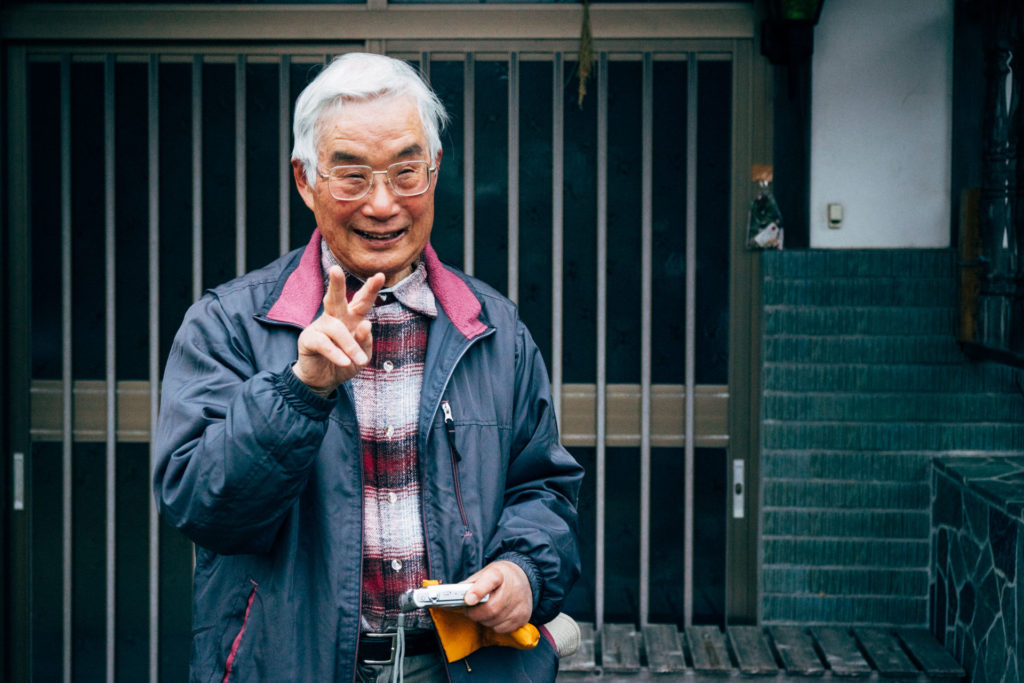
Back in Genryu no Sato, a noon, we met a japanese man from the nearest village who literally changed our stay : Ken-San. Ken-San is an octogenaire who lives 10 minutes by bike from the resort. He traveled to more countries in Europe than the three of us gathered and despite, according to his assertions, his lack of intelligence (which is completely wrong!), he studies English once per week in the closest city. He loves these lessons, is very keen, and makes it a point of honor to meet as many foreigners as possible to train, practice and exchange. If he sometimes searches the good words, he is way better in english than I can speak japanese and chatting with him was a real pleasure. He offered to take us around the area in his creamy white Toyota Crown, the car of the Japanese taxis, which he drove cautiously through the narrow roads that connect Nakatosa to Shimanto-ch ō.
Thanks to Ken-San, we were able to visit the Kappa Museum, a mischievous yōkai that attacks, according to legend, mainly children and animals bred near rivers. Kappa is a green-coloured anthropomorphic demon with a frog mouth or a beak and a container on top of its skull (皿, or plate) filled with water. If we empty it, the Kappa loses all its strength and becomes vulnerable. This weakness must be known because if he is now represented as a more cute than vicious being, he once had the reputation of drowning children in the rivers. His other weakness is his love for cucumber, the only food he prefers to the fresh flesh of young humans. That is why, at long time ago, we could see cucumber thrown by the residents floating in the rivers to protect their offspring.
He also brought us to visit a temple, and especially his house and the wood that overlooks it. A beautiful traditional japanese mansion, built in japanese red cedar (杉 – sugi) with prints on the panels that separate the rooms. Once inside, it feels like many years back, when concrete didn’t exist yet.
When you meet someone like Ken-San, who has deep kindness, the urge to exchange, to share what he loves, you feel thankful and humble. I will always remember this man of 86 years climbing in the underwoods, shears in hand, to show us the source that feeds his house and and the flowers that grow only here. Of course, it personally brought me back to my childhood, when my grandparents made me discover their world with their experience : cooking, mountain, countryside, gardening… This might be what we call “growing up” or “getting old” : discovering exciting, simple things, and sharing them afterwards. In any case this is something that touches me particularly and to which I will now give even more importance.
On the eve of Thomas’s departure, we invited Ken-San to eat with us on our rest day. The Australian made a barbecue, the Frenchman I am prepared french crêpes (Morgan had already left the resort to work in Hokkaido). It was a good way to thank him, I think. The fish in aluminium foils and the grilled meat were delicious, and the pancakes gave rise to a food drawing contest, which continued to relax the atmosphere.
I hope that Ken-San will continue to study english with as much diligence as he has for years and that he’ll come to meet strangers at Genryu no Sato for a long time. It is one of the unique experiences that you cannot calculate when you plan to stay somewhere and are worth all the visits to temples in Japan.
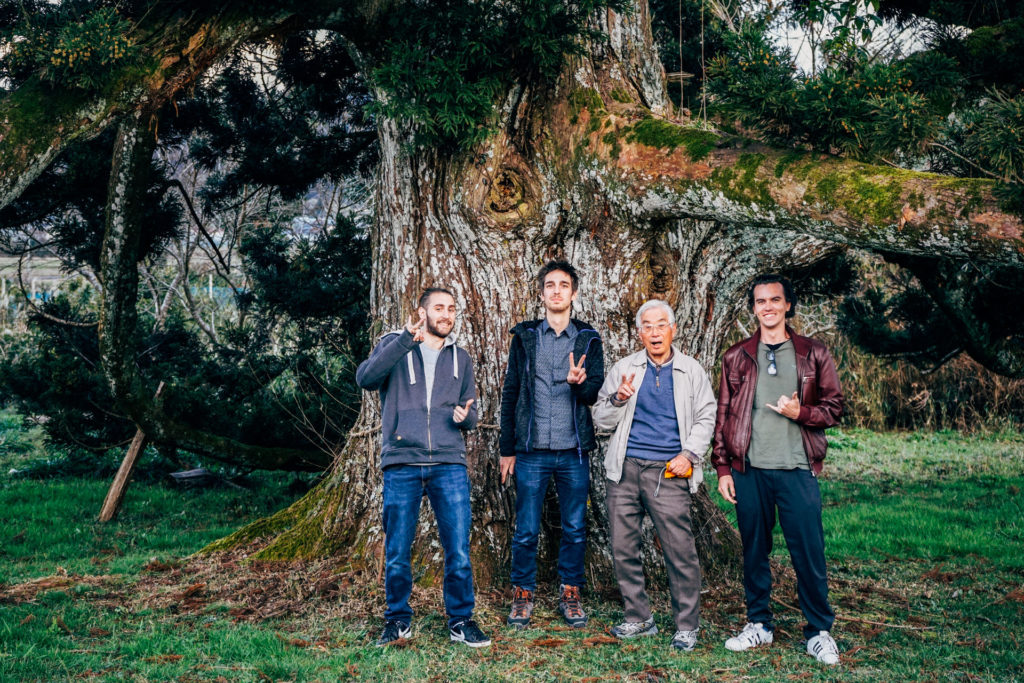
A little more about Shikoku
When you get a little information about Shikoku, you quickly realize that this island is not at the same pace as the rest of the country. The roads are small and narrow for the most part, the mountain is steep, there is almost no plain and the 24 hours convenience stores so numerous in Tōkyō are scarce. I was a little afraid about these aspects, fearing isolation after moving a lot at the beginning of the journey. I quickly changed my mind once in the middle of the green mountain, without light at night to pollute the sky or noise surrounding the birds singing. Only the flow of the Shimanto River emerging from the peaceful silence of the region.
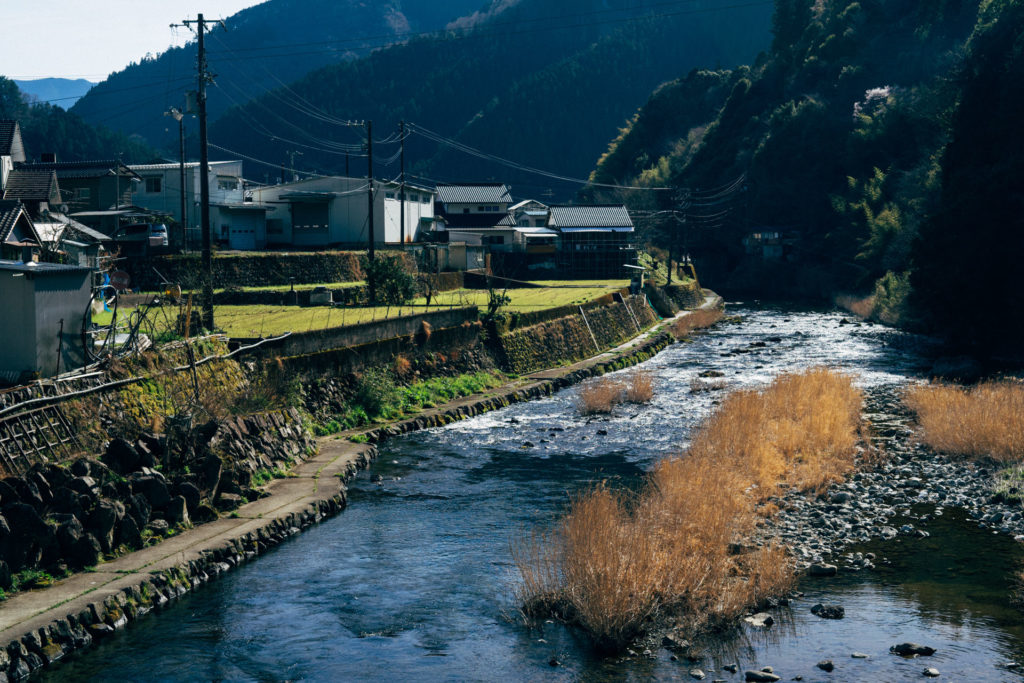
Beside work, there was not much to do on the spot. Here, no video games arena, no monument or famous point of interest in the immediate vicinity to visit, everything is far away and one is far from everything. Without a car, there is clearly not much to do in this remote area of Japan. There are only a few buses, but they do not circulate on sundays, schedules are not coordinated between the different lines, and so it is almost impossible to get to Tosa-Kure, a fishing village specializing in bonito, in one day.
However, for several reasons, I loved staying so long up there, and I must confess that I already miss this environment a lot. By borrowing one of the bikes from the resort, I could easily rideabout twenty kilometers to lose myself on the winding roads and discover the landscapes according to the fading light.
The Shimanto River is omnipresent. Always audible, more or less strongly depending on the height you take, it remains as a guiding thread throughout the walks. Nature is alive here. When it rains, it keeps going during 24h without discontinuing. Then comes the good weather for several days. Here you can feel a kind of Earth’s breathing : the mountains are gorging with water, the earthworms go out and walk on the roads, then, when the sky emerges and the birds start their songs again, the river restores this water to the ocean many kilometers away from there. I could never have observed this phenomenon by staying only a small week here, we realize it after a fortnight I would say…
I spent an infinite time doing nothing but riding peacefully in the area to enjoy the time that passes and the end of the day at the beginning of spring. It was a pleasant time. The gradual blossoming of the sakura turned the impression of general beauty of the place into miracle. I don’t know if I could actually enjoy the hanami (花見 – picnic under the cherry blossoms) in a city after seeing the buds hatch one by one all around me.
I was also able to go through a very small part of the pilgrimage that is all around Shikoku. It is a long journey of 1200 kilometers passing from temple to temple, 88 in total, through the 4 prefectures of the island. Pilgrims can be regularly seen when walking around. They wear a typical hat and a walking stick. We walked for only 2 hours on the trail but it is clear that it must be a tiring journey : the trails continue to climb and descend, and if some temples are rather gathered and thus allow to rest more easily, it seems that there are fairly large “empty areas” without nowhere to eat or to stay. It is in any case one of the most famous hiking trails in the country and it is definitely worth a visit…
If you have time, if you’re sick of the noisy japanese megacities, if nature misses you, the vicinity of the city of Nakatosa are made for you. The Genryu no Sato resort can be a good stop to enjoy the region. The rates are low (about 3000¥ per person per night), Manon cares well about the guests and Aoki cooks delicious and affordable dishes.
I still wonder what will happen to this area. I have not visit the entire Shikoku. I go back in September, but in another prefecture for a small month, so I can talk better about it at that time. But one thing is certain : more than anywhere else in the country, the population is declining here. I do not remember a single person under 60 years of age working in the fields. The few young people we meet are deliverers, or nurses in a retirement house. The convenience stores close one after the other and the Nakatosa elementary school has been converted back into a nursing home. Vacant houses are being sold by the cities. For example, you can find a 120m² house in good condition and with a nice garden for less than 1 800 000¥ (now about 15 000€). There are even municipalities that give away some abandoned homes or rent them for free. It also happens to fall on abandoned houses in the heart of the mountain.
To say that tourism can save Shikoku is in my opinion a mistake. Without local shops it is complicated to attract travelers and peasants participate greatly in the beauty of this landscape. Ken-San, if he is not a peasant, works every day to maintain his wood and gardens. It is the same for all the locals. Not a day passes without the grandfathers and grandmothers of the corner come out to look after a mound of culture, a square of flowers, to carve a grove, to pick up vegetables, and this from morning to evening. It is a real old-fashioned agriculture : where the machines exist but are models of the ones we find in our countries and where the steep ground sometimes forces manual labor.
But now, young people have been fleeing the countryside for a long time. They go mass to Tōkyō or Ōsaka to study and then work and hope to pursue a career in an increasingly demanding and stressful environment in exchange of a good salary. It is so extreme that the municipality of Tōkyō offers a bonus of 3 million Yen to those who want to leave the megalopolis.
I hope one thing: that a place like Shikoku will never be turned into a gigantic tourist platform in the hands of a multinational specialized in concrete landscaping and sightseeing buses. Some people see the hope of re-energizing the place, others see it as a boon to enrich themselves, but after having lived a short time there, I am not sure that this is the best solution.
To conclude this long article, I would say that if visiting Yakushima was an unusual experience although too short, this stay on Shikoku is for now the heart of this trip. I still have a lot of time to spend in Japan and I have already lived other strong experiences, but this immersion in the wilderness, and especially the sweetness of life on this island will remain for me unforgettable and unique.
Finally, the real luxury of travel is maybe to be able to take your time…




